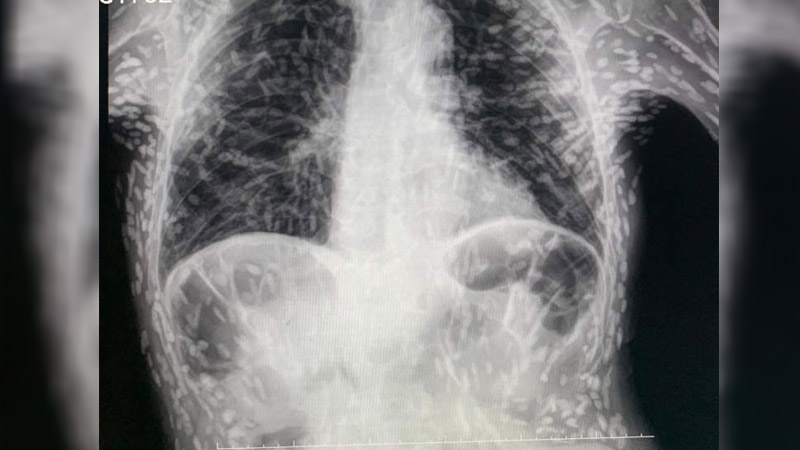Recently, a Brazilian doctor surprised social media users by sharing an X-ray of a guy with cysticercosis whose body was covered with petrified tapeworm eggs.
In order to demonstrate to his followers how severe a tapeworm infection may get, doctor Vitor Borin de Souza, a resident at the Hospital das Clnicas in Botucatu, Sao Paulo, shared this X-ray of a patient on Twitter last month.
The doctor identified the white spots as calcified tapeworm eggs, which were present throughout his arms and torso as a result of an infection with the common intestinal parasite. Fortunately, because all of the eggs were calcified (unviable), the patient, who had visited the doctor for a checkup because of a persistent cough, was not in danger.
Despite not endangering the man’s health, the tapeworm eggs (cysticerci) created quite a stir on Brazilian social media. Dr. de Souza clarified on Twitter/Youtube that these lesions are not live cysticerci since they are calcified. Life carries on if it doesn’t cause any agony.
Cysticercosis is a condition brought on by ingesting tapeworm eggs and is thought to be rare in Brazil, where there are less than 150 000 cases each year. It mostly affects intermediate tapeworm hosts, which are often pigs and cattle, however occasionally it can also affect people. As a result, almost any or all of their organs may get infected with parasite eggs.
Even though it’s horrifying to think about, cysticercosis is a serious problem in nations where simple hygiene precautions are frequently ignored. Although cysticerci can infest any organ, the brain is by far the most dangerous. In the world, neurocysticercosis is the most common cause of acquired epilepsy and results in 50,000 deaths annually.
Studies have revealed that immunosuppressed individuals, who have a more delicate immune system, are more susceptible to severe cysticercosis, like the one seen in Dr. Souza’s X-ray.


